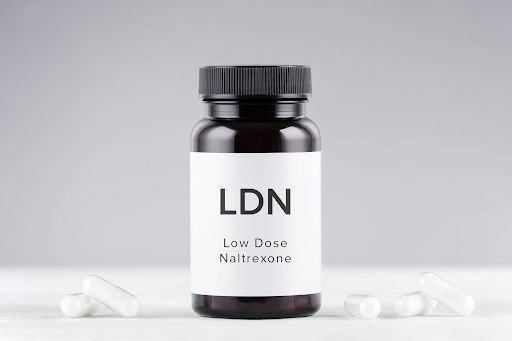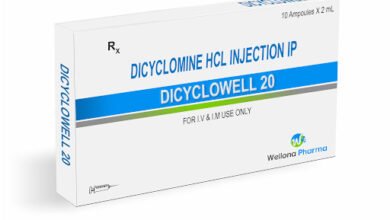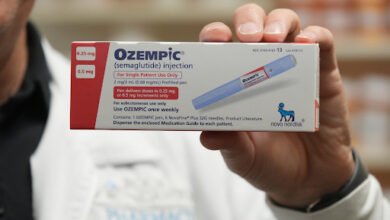What To Avoid When Taking Low Dose Naltrexone

Low-Dose Naltrexone (LDN) has recently gained huge popularity in the treatment of certain health issues like multiple sclerosis, autoimmune diseases, and fibromyalgia. It has also shown tremendous results in reducing pain and inflammation and preventing chronic health problems. This drug acts as an opioid receptor agonist which blocks the activity of the opioid receptors of the brain which interfere with the response of the body to certain drugs. Though LDN is effective and safe to consume, if used inappropriately, it also has some potential risks associated with it such as side effects and drug interactions. Therefore, it is important to be mindful of these factors before planning to use this medication. So, we are here with this article to help you explore what exactly LDN is, how it works, what are its uses, and the burning question of what to avoid when taking low-dose naltrexone, along with its side effects to be aware of! Take A Look!
What Is Low-Dose Naltrexone?
Low-Dose Naltrexone (LDN) in general is a small dosage of naltrexone that is 10% of the actual dose taken for the treatment of opioid addiction. It is around 4.5-5 mg of naltrexone each day as compared to the usual high dose which is 50-100 mg a day. This type of medication is believed to relieve inflammation by balancing the immune cells which play a role in activating the inflammatory response. This remarkable property makes LDN a potential drug to treat many health conditions such as fibromyalgia, chronic fatigue syndrome, chronic pain, chronic inflammatory diseases, autoimmune diseases, and long covid. Low-dose naltrexone is not addictive and does not even cause any withdrawal symptoms upon stopping its use. It is available as a prescription drug which comes in the form of capsules, tablets, liquids, or creams.
How Does Low-Dose Naltrexone Work?
Though experts are not completely assured of how the low doses of naltrexone act and relieve chronic fatigue syndrome, fibromyalgia, and other health conditions, some trials say:
- Low-dose naltrexone blocks some immune system proteins that are the root cause of chronic fatigue syndrome and fibromyalgia symptoms.
- Low-dose naltrexone may keep the immune system of the body well-balanced temporarily. That’s why this medication helps treat issues related to the immune system.
- Low-dose naltrexone blocks receptors connected to pain for some short period and activates the release of natural pain-relieving hormones called endorphins.
- Low-dose naltrexone functions as a potent anti-inflammatory agent, which lowers swelling or inflammation in the nervous system of the body.
Uses of Low-Dose Naltrexone
Wondering what is LDN Used for? Low doses of naltrexone may help individuals struggling with chronic fatigue syndrome, fibromyalgia, and some other health issues. Check out the detailed uses of LDN naltrexone:
1. Chronic Fatigue Syndrome
Also called myalgic encephalomyelitis, chronic fatigue syndrome is a condition that is marked by issues such as feeling sleepy, deep fatigue, neurological problems, and exercise intolerance. Every person will experience different potential symptoms and degrees of severity. Low-dose naltrexone is sometimes prescribed as “off-label” for chronic fatigue syndrome. “Off-label” means that though the medication is not FDA-approved, still it can be used for certain diseases. This is because many people while using this medicated drug have noticed a decrease in symptoms. Some experts suggest that patients with chronic fatigue syndrome might experience neuroinflammation, an inflammatory response in the spinal cord or brain. As mentioned above LDN can lower the inflammation triggered in the nervous system, this is expected that the medication may be beneficial for some.
2. Multiple Sclerosis
Multiple Sclerosis is categorized as an autoimmune disease which is characterized by the condition where the immune system of the body accidentally strikes the protective layer of some nerve cells. As a result, it causes muscle weakness, cognitive issues, fatigue, and pain. A study says that low-dose naltrexone can benefit people with multiple sclerosis (MS) by preventing fatigue and improving their quality of life. However, though some trials have proven the tolerability and safety of LDN, it is still challenging to conclude about the effectiveness of this medication. This is because most of the tests are small and poorly organized and some have made use of animal models. More research is required to confirm its efficacy in the treatment of MS. If its efficacy is confirmed, LDN would be the most safe and affordable option to the costly treatments that are currently suggested for multiple sclerosis.
3. Fibromyalgia
Fibromyalgia is a type of chronic health condition that is marked by symptoms such as fatigue, depression, intense pain, cognitive impairment, digestive issues, sleep disturbance, and environmental sensitivities. According to research, LDN prescribed as a medication in the treatment of fibromyalgia can help relieve pain and even improve the patient’s quality of life. However, it is also stated that current studies on the effectiveness and safety of LDN in people with fibromyalgia are still not well-known. Higher investigations are required to confirm these factors. Though low-dose naltrexone is not approved by the FDA, it is sometimes recommended by professionals for “off-label” use.
4. Crohn’s Disease
Crohn’s disease is characterized as a chronic inflammatory health condition that impacts some tissues of the digestive system. Though low-dose naltrexone has shown results in lowering the symptoms in individuals struggling with Crohn’s disease, most studies are small. Even the conclusions of these studies are based on personal beliefs or thoughts instead of real facts. This means it is tough to know how effective LDN is in treating this health condition. However, this medication does seem to be well-tolerated, making its use safe for people suffering from Crohn’s disease.
5. Long term COVID
Sometimes, people with COVID-19 continue to experience some symptoms for more than 12 weeks. When this situation occurs, it is known as Long Covid (LC). Research says that low-dose naltrexone can be used for the treatment of long-term Covid as it helps lower the symptoms and improve overall well-being. LDN has decreased the severity of the symptoms at two months in people struggling with LC for an average period of 11 months. However, the studies were small, and more analyses would be required to conclude the effectiveness of low-dose naltrexone in individuals with this condition.
Also Read: Can I take Naltrexone for weight loss?
What To Avoid When Taking Low-Dose Naltrexone?
Wondering “what to avoid when taking naltrexone in low dosage”? Low-dose naltrexone has fewer side effects which are mild and fade away after a while. However, though rare, the most severe effects like allergic reactions can emerge because of drug interactions. That’s why medical practitioners advise avoiding the following things while using LDN:
1. Prescription Opioid Medications
Since low-dose naltrexone is known as an opioid antagonist, this drug can reduce and sometimes hinder the effectiveness of opioid-containing medications. Examples of those medications are:
- Morphine: MS Contin
- Oxycodone: Oxycontin, Roxicodone, and Percocet
- Codeine: Fiorinal with codeine and Tylenol with codeine
- Hydrocodone: Vicodin, Norco, and Lorcet
- Hydromorphone: Exalgo and Dilaudid
- Oxymorphone: Numorphan and Opana
- Methadone
- Fentanyl
- Buprenorphine
- Tapentadol
- Meperidine
- Tramadol
Incorporating low-dose naltrexone and opioid medications is harmful as it raises certain risks such as coma, drug overdose, and even death. Avoid having naltrexone if you are struggling with opioid addiction or if you’re undergoing withdrawal symptoms of opioids. Do not consume LDN within 7-14 days of consuming opioid-containing medications.
2. Antidiarrheal Medications
Low-dose naltrexone can neutralize or block the impacts of some antidiarrheal medications that target the opioid receptors and help treat bowel motility and irritable bowel syndrome and reduce bowel movements. The following are the antidiarrheal medications:
- Loperamide
- Diphenoxylate
- Difenoxin
- Eluxadoline
Besides impacting the effectiveness of these medications in people struggling with opioid addiction, low-dose naltrexone can also give sudden rise to severe withdrawal symptoms. As the metabolism of Naltrexone occurs in the liver, there can be risks of shifts in drug levels of medications that are also absorbed in the liver. If you are consuming any of the above-mentioned antidiarrheals, you have to wait for at least 7-10 days before taking the low-dose naltrexone.
3. Some Cough Medications
Some prescribed cough medications consist of opioids. For instance, hydrocodone/homatropine and promethazine/codeine. As we have mentioned earlier, low-dose naltrexone targets the opioid receptors, it can neutralize the impacts of certain opioid-containing cough and cold medicines and leads to discomforting withdrawal symptoms. So, if you want to start using naltrexone, you have to stop taking any cough and cold medications before 7-10 days to avoid any withdrawal symptoms. In case you are taking LDN and at the same time struggling with an irritating cough, consult the doctors first. Professionals will recommend other safe and effective cough medications such as Mucinex that may help prevent the bothersome cough.
4. Alcohol
Avoid drinking alcohol while consuming LDN. Though combining low-dose naltrexone and alcohol does not cause any major damage, it is very well-known that alcohol on its own can be toxic to your health.Research says naltrexone can help prevent cravings by hindering the euphoric effects of alcohol. However, this medication does not lower the impact of alcohol on the body. So, if you drink alcohol for a long time, you can experience some short-term side effects such as dehydration, accidental injuries, and delayed brain functioning. On the other hand, long-term effects may include memory impairment, anxiety, and depression. Moreover, when it comes to simultaneously consuming naltrexone and alcohol side effects that may be experienced are hangover or nausea-like feeling after some hours of drinking alcohol. So, if you notice these symptoms, seek help from healthcare providers. They will help discuss the risks associated with these two blends and provide alternative treatment in case you are finding it difficult to quit the alcohol.
Also Read:What to Avoid When Taking Naltrexone?
Side Effects ofLow-Dose Naltrexone
Side effects of LDN are rare as the dose is very low. However, some people may experience some associated symptoms. The following are the naltrexone low dose side effects:
- Sleep disturbances (insomnia)
- Nightmares or wild dreams
- Dizziness
- Nausea
- Fatigue
- Anxiety
- Decreased appetite
- Headache
- Muscle cramps
- Weight loss (rarely)
- Prolonged erections (rarely)
In a few cases, these low-dose naltrexone dangers can be managed. Professionals can ask to reduce the LDN dosage or change the time of consuming the medication as having it in the evening may impact the sleep patterns, causing insomnia. On the other hand, the long-term side effects of low-dose naltrexone are very uncommon. These may seem to turn out at high dosages. However, some severe side effects may occur in rare instances. Those include allergic reactions, high heart rate, increased blood pressure, depression, and confusion. If any of these symptoms sound similar to you, contact the doctors immediately. It is important to keep in mind that individuals with liver problems and kidney diseases may need to seek medical guidance before using LDN. Besides this, breastfeeding and pregnant women also have to consult their gynecologists first before taking this medication.
Summing Up
We learn in this article what to avoid when taking low-dose naltrexone. Some experts do not claim the exact effectiveness of the Low dose naltrexone in the treatment of conditions such as chronic fatigue syndrome and fibromyalgia. Some believe that being an anti-inflammatory agent, this medication can help stabilize the body’s immune system and stimulate the release of pain-relieving hormones called endorphins. According to some studies, LDN has shown some reduction in symptoms with mild side effects. However, many of these studies are small and not well-documented, therefore, larger research is needed to confirm its accurate efficacy. If you are taking this medication, consider avoiding all the listed drugs and substances as the combination can harm your health and overall well-being.
Frequently Asked Questions
What are the side effects of low dose naltrexone?
Though low dose naltrexone is well-tolerated, there are some chances of rare side effects such as nausea, dizziness, vomiting, headache, decreased appetite, vivid dreams, joint pain, and difficulty sleeping (insomnia).
What are some naltrexone off-label uses?
Naltrexone off-label is used to reduce inflammation and relieve pain. Moreover, it also helps in the treatment of certain diseases and health conditions such as cancer and immune dysfunction.
How long do low dose naltrexone side effects last?
The effects of low dose naltrexone can last for about 6 hours before subsiding.
How long does it take low dose naltrexone to work?
Low dose naltrexone takes around 4 and 6 weeks to show its effect. That’s why healthcare providers advise the lowest dosage for some initial weeks and then further increase the dose.
Can you drink alcohol while taking low dose naltrexone?
Yes, you can have alcohol while using low dose naltrexone as being opioid receptor agonist it can reduce the euphoric effects of alcohol and prevent alcohol addiction.
What happens if you drink while taking naltrexone?
If you drink alcohol while using naltrexone, the euphoric effects of the alcohol will be blocked, preventing the feelings of “High”.
Should I take LDN in the morning or at night?
Low dose naltrexone is recommended to be taken at bedtime as endorphins are produced in large numbers during sleep time. However, some people might experience sleep disturbance during the night, so for them taking LDN in the morning may be suitable.
Source link
#Avoid #Dose #Naltrexone



